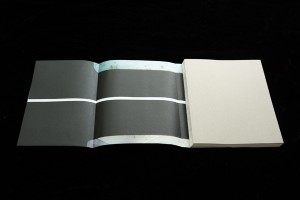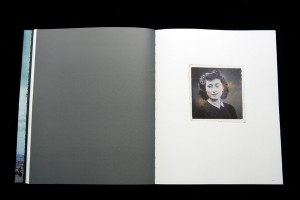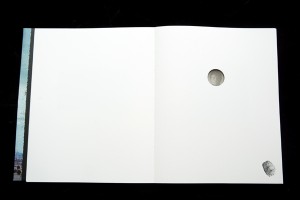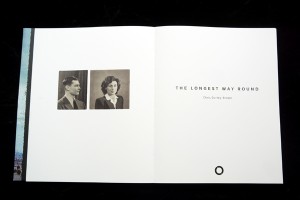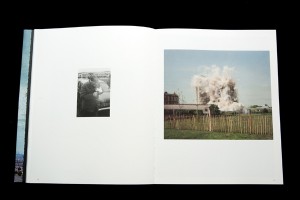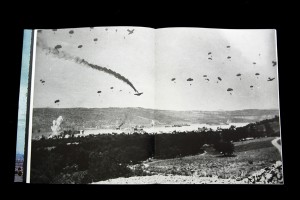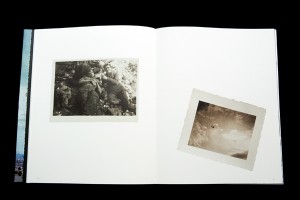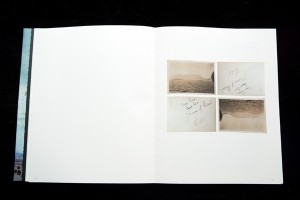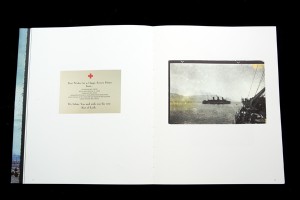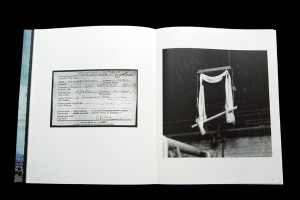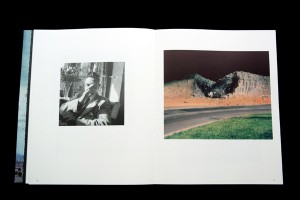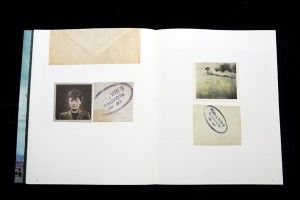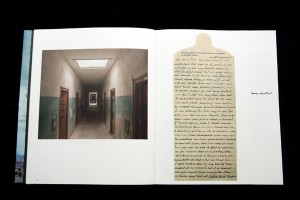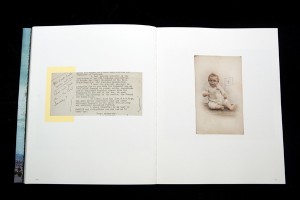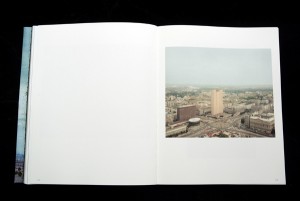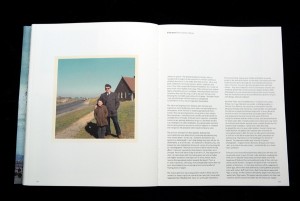The photo book named ‘The Longest Way Around’ produced by Chris Dorley-Brown, is a photo book that visually investigates the Dorley-Brown’s family history. It is constructed by historical images that have been interlinked together to create a whole new set of images. It aimed to uncover a treasure trove of archive material not intended for your typical family album. The new images that have been created present a multi-layered alternative narrative for the course of events that shaped the later 20th century. The book looks at two Londoners, Peter and Brenda, that were born in the 1920’s. These two embark on a series of journeys that were shaped by war, romance and a subsequent settlement in a seaside paradise. The book got started when, these two Londoners were unable and much unwilling to recall some of their most traumatic experiences to their five children. Therefore, a box of photographs, film negatives and letters was handed down to their youngest child, who so happens to be a photographer. From then on wards, Chris Dorley-Brown started to form a new narrative with the archive, integrating his own pictures made in the UK and on travels through Europe that follow in the footsteps of his mother and father. The book is very ‘war’ heavy. This is because of the fact that they were growing up with the times of World War II. Dorley-Brown’s parents were not yet married during the world war two, however they had already known each other as childhood friends. At the of 19, Dorley-Brown’s father Peter volunteered as a heavy artillery sergeant and survived the Battle of Crete, four years as a prisoner of war in German stalag camps, and a death march of more than 500 miles in extreme weather that happened towards the end of the war. Some of Peter’s photographs that he had taken were confiscated as he served his four years as a prisoner of war, however , somehow, they are included in this photo book. The photo book itself addressees subjects of personal identify and memory, and offers potential for a sense of closure for the author. So there is a construction of a narrative here, but it’s quite low-key. This is a very gentle retelling of the story, one where the archive images are put back into places that they very easily fit. There is neither the deconstruction and recontextualization that you find in archival projects where the original meaning is almost lost, nor is there the conscious reworking of key elements in the image through integration with other materials.Instead Dorley-Brown glues it all together with images of his own. The old is mixed with the new to create a scenario where the past is visually connected to the present through images of lakeside restaurants, Warsaw roundabouts and Hackney demolition jobs.
“The question was, what to do with it? It’s the basic question of old pictures, of how you reinvent them and make them into something new. Or do you simply recycle them as something that belongs to the past?”
“I believe in ghosts. The dead and departed remain with us. I would look through this old suitcase full of folders and boxes of faded documents in my studio from time to time – Mum and Dad’s collection of personal pictures, letters, negatives, and more. They held a suspended threat of revelation, but i could not parse them into a legible chronology. They remained just random sparks of another person’s nostalgia. I would put them away but somehow they were burning a hole in my soul. Perhaps I was delaying the inevitable assembling of the jigsaw. I thought maybe I was just the keeper of these treasures, designated to hand them on to a more imaginative descendant. “
“The silent and ongoing inner dialogue with memory and experience seems to become more reliant on hard evidence as time passes, while the brain is steadily upgraded with fresh events. They are accompanied by new artifacts that, being a documentarian, I manufacture at a prolific rate and transfer to unstable forms of media. Archivists call it migration. Unreliable memories are partially deleted as we go on, and what remains is a compilation of edited highlights. At unpredictable moments the remaining detritus announces itself as ready to re-interpret and reorganize. Be prepared; time-travel comes at a price. “
“The innate optimism my young parents exude in these pictures remain as reassuring to me now as it ever was, but i know what happened next. Reading their faces, it’s as though they believe they are immortal. Seeing your mother and father as young people is like seeing the future, not the past. You realize your own existence came about through the most slender and tenuous matrix of events. “
“With photographs you can extent and compress time as you choose, they are interactive and can be assembled into narratives of your own design, without meditation. “
“I start to reconstruct a visual history of these two young and attractive Londoners, both with family rooted in the East End immigrations of the 10th Century. They were just the right age to be up to their necks in the largest-scale conflict in history, but the photographs don’t show fear or pain. “
“We only get the camera out for the good times, right? What the pictures do show is a kind of achievement of escape velocity, a transcendence of terror, a reunion of childhood friend finding themselves beached on an island paradise, so good the can never leave.”
I decided to choose this photo book as a photo book of inspiration as I feel like, with what I wan to do for my own A2 exam, I am wanting to explore the truth about where I was born and where I grew up with the use of old archival photographs of me and my family. Therefore, although completely different situations, I feel like in a way, this photo book is very similar to what I am looking to achieve out of this project. I also really like the way the photo book has been presented and the whole aesthetic of the photographs, as it really creates a sense of memory in the future through the use of manipulation of old photographs with the intention of creating new ones from those.



